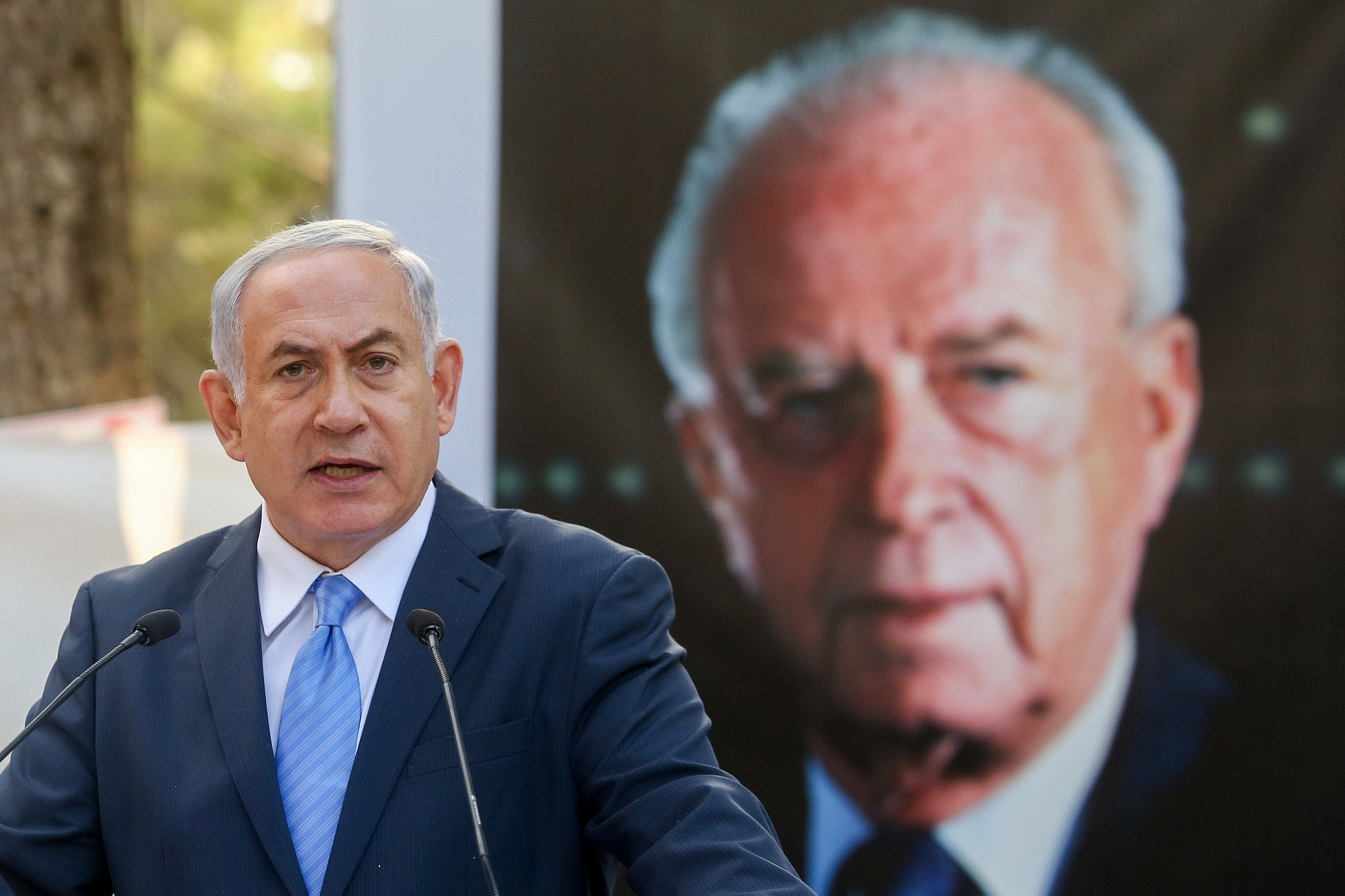For anyone even vaguely familiar with the Middle East, Oslo is more than just the capital of Norway. For 30 years, the name has been a metonym for the series of agreements signed between Israel and the Palestine Liberation Organization (PLO) in the 1990s. From the Declaration of Principles announced in 1993, through to the 1998 Wye River Accord, the last formal agreement associated with the process, Oslo established political contours and power dynamics that continue to shape Israel-Palestine to this day. Oslo also became a paradigm, a fixed conceptual framework with attendant assumptions and expectations, for thinking about how Israelis and Palestinians should reach a resolution to the conflict.
But in classic postmodern fashion, Oslo was born an atomized idea. All the relevant parties saw something in the accords that the others did not, each trying to gear them into specific — often diverging or contradictory — political aims.
What remains of Oslo, beyond the policies it produced, are these fragmented images of where each side thinks it is going. The use, and sometimes exploitation, of Oslo as a concept has taken on a life of its own; decoding its meaning in the minds of each relevant party reveals much about where they want to go.
On the ground, the policies that remain from Oslo are fairly clear, even if certain aspects are not always visible to the naked eye: Israel’s overarching military rule over the West Bank and Gaza (even the fragments of Areas A and B, nominally governed by the Palestinian Authority, come under regular IDF incursions, as essentially permitted by Oslo); its sweeping civilian control and settlement growth over the majority of West Bank land, designated as Area C; economic restraints on Palestinian society through the Paris Protocol; coordination with Palestinian security forces, essentially acting as an auxiliary force of the Israeli military; and the collective restrictions on Palestinian physical movement implemented through an incomprehensible, colonial-legacy permit (pass) regime.

By contrast, the Oslo “process” itself — negotiations to reach interim conditional agreements for limited Palestinian autonomy without final status decisions — stagnated 25 years ago. And while it might have been superseded by talks for a comprehensive two-state solution in the early 2000s, and again in 2008, these tracks also failed. But the image of Oslo — the multiple meanings that arise when the name is deployed — lives on.
The most generous meaning is certainly in the eyes of its architects. As former Israeli negotiator Yossi Beilin told me ahead of the 20-year anniversary, Oslo was seen as a surefire path toward a more comprehensive accord. Spoilers from both the Israeli and Palestinian sides intervened, but Beilin believed that had Prime Minister Yitzhak Rabin not been assassinated in 1995 (by the far-right Israeli extremist Yigal Amir), the process would have led to final status negotiations and eventually an agreement for peace.
Palestinian architects had a more generous understanding, projecting their longing for national self-determination in the form of a state onto an agreement that never mentioned Palestinian statehood. As such, in Oslo’s first year, Palestinians surveyed about the process strongly supported it as a first step toward independence. But their hopes, and their poll numbers, soon fell; by the summer of 1995, over 80 percent did not trust Israel’s intentions.
When the first Oslo document was signed in 1993, the Israeli right wing already viewed it as a catastrophe. The secular right — and, as we recently learned, Rabin’s own government — worried that the new Palestinian Authority would not restrain terrorist activities. And indeed, Hamas and other opponents did unleash terror attacks, especially following the 1994 massacre of Palestinians at Hebron’s Ibrahimi Mosque/Tomb of the Patriarchs by the American-Israeli extremist Baruch Goldstein.

The position of Israel’s nationalist-religious right can hardly be forgotten. This camp holds that the word of the Bible is literally and historically true: that God granted the Jewish people all of the territory of the modern-day West Bank (and beyond). It’s hardly worth arguing the point. But for this hardline minority, Oslo was a betrayal of divine will that could thwart the coming of the messiah. All other considerations — democracy, international law, humanity — were trifles.
Admitting reality
Thirty years later, both the dangerous and blasphemous meanings of Oslo for Israel’s right wing are fundamentally unchanged. What’s different is that security hawks have become fully content with the policies of Oslo. It is Oslo that enables Israel’s profound penetration into Palestinian life, through physical, military, bureaucratic, and cyber-surveillance mechanisms. It is Oslo that formally maintains Israel’s military control over all of the West Bank, and over Gaza by controlling its borders, airspace, and seaports, rather than directly through troops. Needless to say, in the religious vision, God’s deed to the land continues to overrule the Palestinian right to self-determination and the prohibition on conquering territory in war.
For the Israeli right, the only thing that changed is their appetite. Instead of seeking to stop Oslo from “giving away land,” the right has reinterpreted the accords as a promise to own all of it. Now, the right wing uses the Oslo-created designations of Areas A, B, and C, to accuse the Palestinians of encroaching on and taking over Area C — even though the entire settlement project, a non-stealthy juggernaut with no security justification, exists entirely in that zone.
The Israeli left cleaved to the vision of the Oslo architects for decades. Politicians and peace activists alike saw the process as a train track into the future. When Israel’s political landscape was upended — by Rabin’s assassination and the ascendance of the anti-Oslo Benjamin Netanyahu — the terms “derailed” and “back on track” became ubiquitous. For the left, Oslo’s aim was true; Israel needed only to climb back on the path.

Finally, the international community clung to Oslo’s image to perpetuate what even New York Times columnist Thomas Friedman recently called “the shared fiction that Israel’s occupation of the West Bank was only temporary.” It’s not just governments; because of Oslo, multinational companies swept in to do business, as Arab countries lifted their threats of boycott on the premise of a future end to occupation.
To this day, European governments and institutions pour money into the fabled “people to people” component of the Oslo paradigm. While Palestinians and Israelis talking isn’t bad in itself, the idea that this feel-good dialogue could withstand the juggernaut of Israeli expansion, the grinding daily injustices of occupation, or tidal waves of military campaigns, was dead wrong.
As Maja Sojref, executive director of the New Israel Fund in Germany, observed, “the power imbalance has grown so much since the 1990s and physical encounters can’t take place because Palestinians can’t get permits, that [Palestinians] say ‘why should we meet when our situation has only gotten worse’ … and then Israelis say there’s no one on the other side — while institutions still pretend that we just need to give more money for more meetings.” It is a part of the Oslo fiction, and perhaps it makes someone feel good. But it certainly doesn’t bring peace.
How did one political concept morph into infinitely pliable meanings? The Oslo process was grounded in “constructive ambiguity,” an approach once viewed as a clever negotiation strategy. After all, Oslo was not a peace agreement, as the caricature image holds, but a deferral of the conflict’s core issues, without ever naming the final political endgame for resolution. If there was no mention of a Palestinian state as the final status, how could Israeli settlement construction prejudice the outcome of partition? If there was no clear decision to divide Jerusalem (which I now personally oppose), why shouldn’t Israel staple the two parts of the city under its exclusive control forever?
I cannot deny that I was among the enthralled fans of Oslo at the start. I was 21 and still living in North America when Oslo snuck up on us. It became an instant beacon, drawing me to the region where I thought I could contribute to peace through its framework.
It took years of living here, learning and digging, to admit what Oslo was doing to peace. I watched as the Oslo policies on the ground enabled Israel’s ever-deepening entrenchment of occupation and the deterioration of Palestinian physical and political life. It turned out that my personal dreams were no match for lived political reality; I could either disconnect from that reality, or admit it. Yet Israel, the Palestinian Authority, and international actors propped up their fictional image of Oslo as a living process, giving cover to the truth that anyone close enough could see.
Now, with three decades of hindsight, I feel Oslo can be summed up best by the famous dialogue from Lewis Carroll’s “Alice’s Adventures in Wonderland,” between a putatively uncertain protagonist and a mischievous Cheshire Cat:
“Would you tell me, please, which way I ought to go from here?” said Alice.
“That depends a good deal on where you want to get to,” said the Cat.
“I don’t much care where —”
“Then it doesn’t matter which way you go.”
“— so long as I get somewhere.”
“Oh, you’re sure to do that, if you only walk long enough.”



